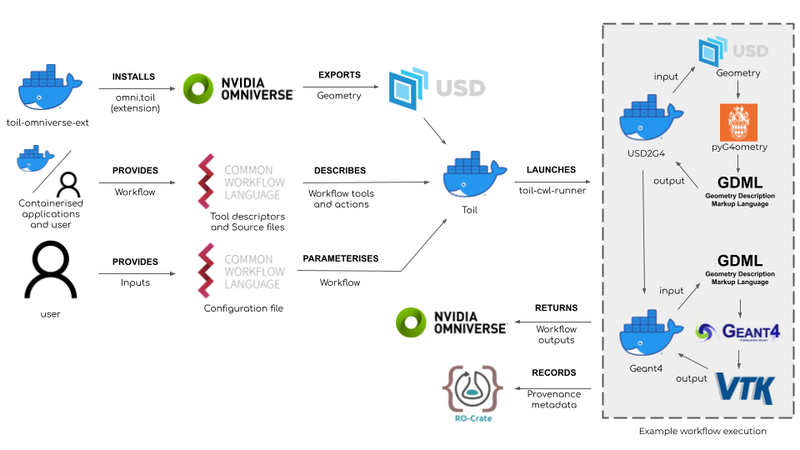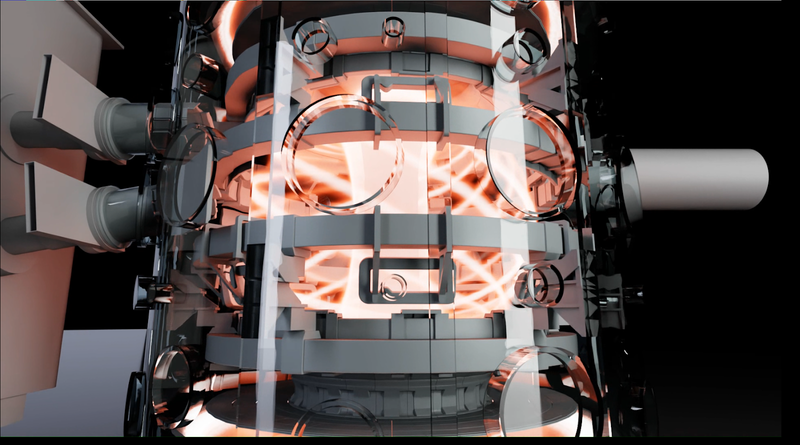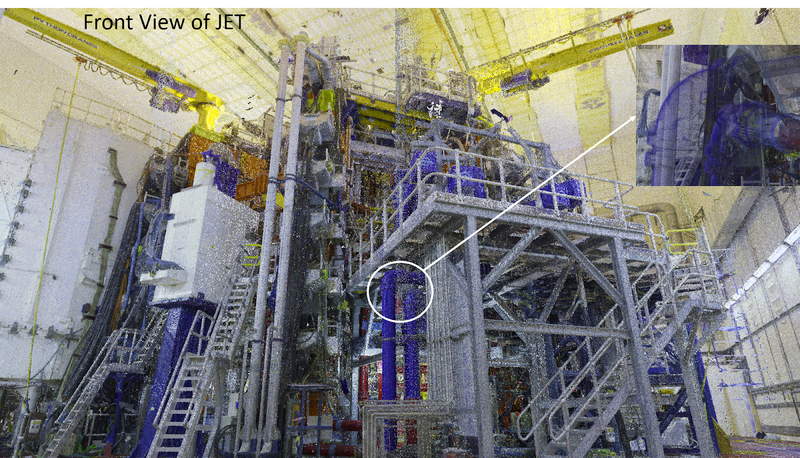We all know that meeting the energy needs of our population in a sustainable way is a major challenge for our age. This is a problem engineers and researchers at the UK Atomic Energy Authority (UKAEA) have been working to solve for decades, hoping to realise the enormous potential of fusion energy.
The task itself comes with huge challenges, designing intricate yet colossal machines, using large and complex simulations, and processing huge quantities of experimental data to name only some.
To help researchers overcome these barriers, Prof. Lee Margetts (UKAEA Chair of Digital Engineering for Nuclear Fusion, Dept. of Mechanical, Aerospace & Civil Engineering), supported by Research IT, has undertaken an investigation to see if the Nvidia Omniverse can provide fusion researchers with an advanced and modern platform for engineering and science.
The Omniverse is a platform which creates a metaverse with live integration with several well known CAD and engineering tools. When in the Omniverse the designs may be explored using Nvidia's cutting edge ray tracing renderers and may even have physical properties and simulations applied. Many companies have explored creating Digital Twins (real-time digital recreations of real word systems) in the Omniverse, including BMW - who modelled an entire factory!
This short project aimed to investigate how easy and how useful a Digital Twin fusion reactor, created in Omniverse, might be.
Integrating Arbitrary Tools
To be useful in the fusion context, the Omniverse will need more advanced and varied simulations and analyses than have ever been applied to it before. The Omniverse was built to be extendable, providing Python and C++ interfaces to all its key components, but this functionality is limited and unsuited to running complex chains of analysis tools.
To address this gap, I created a framework to allow users to run Omniverse data through their usual tools while writing as little code as possible. This was achieved by building the concept of workflows into the Omniverse.
A workflow is a source code file which describes a series of tools, saying what data needs to go into and out of each tool in the chain. Workflows help make analysis more repeatable, more easily shareable and more robust, but they can also act as a light wrapper for tools.
The framework brings the Toil workflow engine (program responsible for running workflows) into the Omniverse. Toil can then access tools the user has installed locally, or has running in containers, easily available online. This all means that the Omniverse can be used with whatever tools engineers and scientists might want.

This picture shows an example of a workflow, configured by the user, which can be run using the Omniverse. The workflow takes the geometry (3D model) from the Omniverse and uses this to perform a simulation in a tool called Geant4, this is then passed back to the Omniverse to be rendered.
Rendering Photorealistic Plasma Simulations
Work has also been done to try to use the advanced Nvidia graphics technology to render the output of simulations. In the past, these simulations, though massively complex and physically accurate, have never given the same visual impression as videos of experiments.

Working with scientists from University College London and with engineers at Nvidia, especially Patrik Hadorn, a much more photorealistic rendering has been achieved.
This work has been a success and will soon be presented at Nvidia's international conference; the GTC.
Processing Point Clouds
Another arm of this project aimed to see if LIDAR scans could be successfully imported to the Omniverse. This is a challenging problem as LIDAR records only points in 3D space, with no concept of how shapes are joined together in reality.

An initial investigation has found a workflow which can successfully perform this translation. This will be critical for later work such as creating a fully accurate Digital Twin.
Summary
Overall this project has met its aim of investigating the use of the Omniverse for Fusion research and the team has built some interesting prototype tools. The project now hopes to win further funding to develop a full data, simulation and analysis platform for UKAEA and the group is open to new collaborators and funding to continue the work.
- This work has recently been featured in HPC Wire - Eyeing Nvidia’s Omniverse for Fusion Reactor Design and was promoted by Ian Buck, NVidia VP for Hyperscale and HPC at International Supercomputing 2022. You can watch a video explaining more about the accelerating the design and development of full-scale fusion reactors on YouTube.

